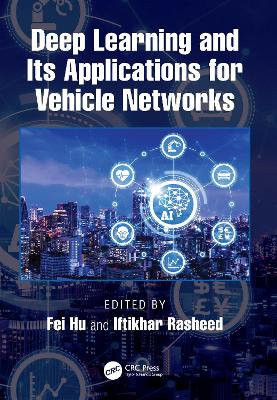
Deep Learning (DL) is an effective approach for AI-based vehicular networks and can deliver a powerful set of tools for such vehicular network dynamics. In various domains of vehicular networks, DL can be used for learning-based channel estimation, traffic flow prediction, vehicle trajectory prediction, location-prediction-based scheduling and routing, intelligent network congestion control mechanism, smart load balancing and vertical handoff control, intelligent network security strategies, virtual smart and efficient resource allocation and intelligent distributed resource allocation methods. This book is based on the work from world-famous experts on the application of DL for vehicle networks. It consists of the following five parts: (I) DL for vehicle safety and security: This part covers the use of DL algorithms for vehicle safety or security. (II) DL for effective vehicle communications: Vehicle networks consist of vehicle-to-vehicle and vehicle-to-roadside communications. This part covers how Intelligent vehicle networks require a flexible selection of the best path across all vehicles, adaptive sending rate control based on bandwidth availability and timely data downloads from a roadside base-station. (III) DL for vehicle control: The myriad operations that require intelligent control for each individual vehicle are discussed in this part. This also includes emission control, which is based on the road traffic situation, the charging pile load is predicted through DL andvehicle speed adjustments based on the camera-captured image analysis. (IV) DL for information management: This part covers some intelligent information collection and understanding. We can use DL for energy-saving vehicle trajectory control based on the road traffic situation and given destination information; we can also natural language processing based on DL algorithm for automatic internet of things (IoT) search during driving. (V) Other applications. This part introduces the use of DL models for other vehicle controls. Autonomous vehicles are becoming more and more popular in society. The DL and its variants will play greater roles in cognitive vehicle communications and control. Other machine learning models such as deep reinforcement learning will also facilitate intelligent vehicle behavior understanding and adjustment. This book will become a valuable reference to your understanding of this critical field.
| ISBN: | 9781032041377 |
| Publication date: | 12th May 2023 |
| Author: | Fei The University of Alabama, Electrical and Computer Engineering, Tuscaloosa, USA Hu |
| Publisher: | CRC Press an imprint of Taylor & Francis Ltd |
| Format: | Hardback |
| Pagination: | 342 pages |
| Genres: |
Machine learning Intelligent and automated transport system technology Automatic control engineering |